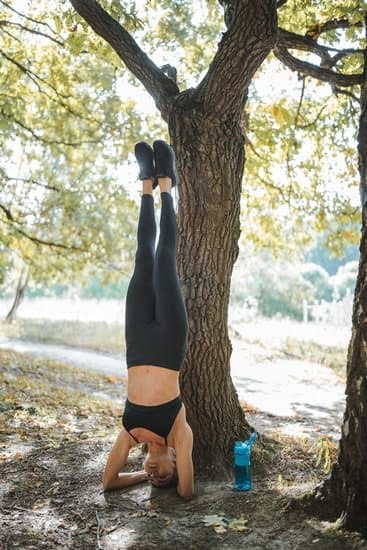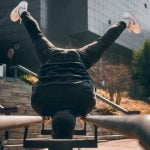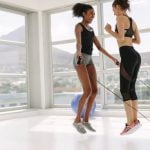Have you ever wondered about exercising barefoot? Whether you are a fitness enthusiast or someone looking to change up your workout routine, the idea of barefoot fitness may have crossed your mind. In this article, we will explore the world of barefoot exercise and dive into the popular Fitness Blender workouts. We will discuss the benefits, risks, and tips for transitioning to exercising barefoot.
Barefoot exercise has gained popularity in recent years due to its potential benefits for balance, stability, and overall foot strength. Many fitness enthusiasts have been drawn to the idea of exercising without shoes, as it allows for greater freedom of movement and a more natural connection to the ground. But what exactly are the benefits of exercising barefoot? And how can Fitness Blender workouts be incorporated into this type of exercise routine?
Understanding Fitness Blender workouts is essential for those considering incorporating them into their barefoot exercise routine. With a wide variety of workout videos available online, Fitness Blender offers a range of options suitable for different fitness levels and goals. From strength training to cardio and flexibility workouts, there are countless ways to challenge your body while exercising barefoot with Fitness Blender.
As we delve deeper into this topic, we will also explore the importance of proper footwear in exercise and how transitioning to exercising barefoot can improve balance and stability. Additionally, we will discuss the potential risks associated with exercising without proper footwear and provide tips for safely incorporating barefoot Fitness Blender workouts into your routine.
So if you’ve ever considered trying barefoot exercise or incorporating Fitness Blender workouts into your routine, stay tuned as we uncover all you need to know about this unique form of fitness.
Understanding Fitness Blender Workouts
Fitness Blender is a popular online platform that offers a wide range of workout videos for individuals of all fitness levels. Founded by husband and wife team, Daniel and Kelli, Fitness Blender provides high-quality, effective workouts that can be done in the comfort of your own home. Their workouts encompass a variety of exercise styles including HIIT, strength training, Pilates, yoga, and more.
Workout Variety
One of the key benefits of Fitness Blender is the variety of workouts available. Whether you prefer cardio-based routines or strength-focused exercises, there is something for everyone. With hundreds of videos to choose from and new content added regularly, individuals can easily find workout programs that cater to their specific fitness goals.
Customizable Workouts
Another advantage of Fitness Blender workouts is the ability to customize them based on your preferences and fitness level. The platform allows users to filter workouts by duration, difficulty level, targeted muscle groups, and equipment needed. This flexibility enables individuals to create a workout schedule that aligns with their personal needs and time constraints.
Professional Guidance
Daniel and Kelli’s expertise in the fitness industry ensures that users receive professional guidance throughout their workouts. Their clear instructions and proper exercise form demonstrations help individuals perform exercises correctly and safely. Additionally, they provide modifications for different fitness levels, making their workouts accessible to beginners as well as seasoned exercisers.
The Importance of Proper Footwear in Exercise
Choose the Right Shoes
When it comes to exercise, wearing the proper footwear is essential for preventing injuries and maximizing performance. Different types of workouts require different types of shoes, so it’s important to choose the right pair for your specific activity. For example, running shoes are designed to provide cushioning and support for repetitive forward motion, while cross-training shoes offer stability for lateral movements and weightlifting.
Avoid Common Mistakes
One common mistake people make when it comes to exercise footwear is wearing old or worn-out shoes. Over time, the cushioning and support in athletic shoes break down, which can lead to an increased risk of injury. It’s important to replace your workout shoes regularly, especially if you are exercising frequently.
Consider Barefoot Options
While proper footwear is crucial for most forms of exercise, there is a growing trend towards barefoot workouts. This trend has led to an increase in barefoot training options and minimalist shoe designs that mimic the feeling of exercising barefoot while still providing some protection and support. However, it’s important to carefully consider whether barefoot exercise is appropriate for your specific needs and fitness goals before making the switch.
How Exercising Barefoot Can Improve Balance and Stability
Exercising barefoot offers numerous benefits, and one of the most significant advantages is the improvement of balance and stability. When you work out without shoes, you engage the muscles in your feet, ankles, and lower legs, which can help enhance your overall balance and stability. Here are some ways that exercising barefoot can improve these crucial aspects of fitness:
1. Stronger foot muscles: Exercising without footwear allows your foot muscles to fully engage with the ground, leading to increased strength and flexibility in the feet. This improved strength can contribute to better balance and stability during various exercises.
2. Enhanced proprioception: Proprioception refers to the body’s ability to sense its position in space. Exercising barefoot can heighten proprioceptive awareness by providing direct contact between the soles of your feet and the ground. This increased sensory input can lead to improved overall balance and stability.
3. Improved posture: The connection between exercising barefoot and improved posture is well-documented. As you develop stronger foot muscles and better proprioceptive awareness, you may find that your posture improves as well. Good posture is essential for maintaining balance during exercise and everyday activities.
When considering incorporating barefoot exercise into your routine, it’s important to start gradually and ensure that you’re performing exercises correctly to avoid injury or strain on your lower body. With proper technique and conditioning, working out barefoot can lead to noticeable improvements in balance and stability over time.
Exploring the Risks of Exercising Barefoot
Barefoot exercise has gained popularity in recent years due to its potential benefits for balance, stability, and overall foot health. However, it is essential to understand the risks associated with exercising barefoot to make an informed decision about incorporating it into your fitness routine.
One of the primary risks of exercising barefoot is an increased susceptibility to foot injuries. Without the support and cushioning provided by athletic shoes, the feet are more vulnerable to impact-related injuries such as stress fractures, plantar fasciitis, and tendonitis. Additionally, barefoot exercise can expose the feet to various environmental hazards such as sharp objects, hot surfaces, or unclean workout areas, increasing the risk of cuts, burns, or infections.
Another risk to consider when exercising barefoot is a higher likelihood of slipping and falling during workouts. Athletic shoes provide traction and stability during various movements such as lunges, jumps, or rapid changes in direction. Exercising barefoot on slippery or uneven surfaces can lead to accidental falls and potential injuries.
It’s important to note that individuals with pre-existing foot conditions or structural abnormalities may be at a higher risk of injury when exercising barefoot. Conditions such as flat feet, high arches, or ankle instability can be exacerbated without proper footwear support and may lead to discomfort or injury during barefoot workouts.
| Risks of Exercising Barefoot | Considerations |
|---|---|
| Susceptibility to foot injuries | Increased risk of stress fractures, plantar fasciitis, tendonitis |
| Higher likelihood of slipping and falling | Lack of traction on slippery or uneven surfaces |
| Impact on pre-existing foot conditions | Potential exacerbation of flat feet, high arches, ankle instability |
Incorporating Barefoot Fitness Blender Workouts Into Your Routine
When it comes to incorporating barefoot Fitness Blender workouts into your exercise routine, there are several benefits to be gained. Exercising barefoot can improve balance and stability, as it allows your feet to fully engage with the ground and activate more muscles in your lower body. This can lead to a stronger foundation for all of your movements, whether you’re doing strength training, cardio, or flexibility exercises.
One of the key advantages of working out barefoot is the increased strength and flexibility it can build in your feet and ankles. When you exercise without shoes, you are forced to rely on the natural support and range of motion provided by your feet, which can help prevent injuries and improve overall foot health.
Additionally, incorporating barefoot workouts into your routine can help you develop a better awareness of your body’s alignment and movement patterns, leading to improved posture and reduced risk of injury during exercise.
It’s important to note that transitioning to exercising barefoot should be done gradually and with caution. Start by incorporating short periods of barefoot exercise into your routine, slowly increasing the duration as your feet adapt.
Be mindful of any discomfort or pain during this transition period, as this could be a sign that you need more time to adjust or that there is an underlying issue that needs to be addressed. With patience and proper attention to form, incorporating barefoot Fitness Blender workouts into your routine can lead to significant improvements in balance, strength, and overall fitness.
| Benefits of Barefoot Exercise | Incorporating Barefoot Fitness Blender Workouts Into Your Routine |
|---|---|
| Improves balance and stability | Strengthens foundation for all movements |
| Builds strength and flexibility in feet and ankles | Develops awareness of body’s alignment |
| Reduces risk of injury during exercise | Transitioning gradually is important |
Building Strength and Flexibility With Barefoot Exercise
Exercising barefoot can contribute significantly to building strength and flexibility. When you remove your shoes, you allow your feet to move freely, engaging the muscles in your feet, ankles, and toes that might not be activated when wearing shoes. This engagement helps to strengthen these muscles over time, leading to increased stability and balance.
One of the benefits of exercising barefoot is that it can help improve flexibility. Without the constraint of shoes, your feet are able to move more freely, allowing for a wider range of motion during exercises such as stretching, yoga, or Pilates. This increased flexibility not only benefits your feet but also extends to other parts of your body as well.
Incorporating barefoot exercises into your fitness routine can also lead to stronger leg muscles. When you work out without shoes, the muscles in your legs are forced to support themselves without any artificial assistance from supportive footwear. This results in a more intense workout for these muscle groups, leading to increased strength over time.
- Engages muscles in feet, ankles, and toes
- Improves flexibility with a wider range of motion
- Strengthens leg muscles by forcing them to support themselves
Tips for Transitioning to Exercising Barefoot
In conclusion, transitioning to exercising barefoot with Fitness Blender workouts can offer a range of benefits for your overall fitness and well-being. By understanding the advantages of barefoot exercise, such as improved balance, stability, and greater strength and flexibility, you can make an informed choice about incorporating this practice into your routine. However, it is important to be mindful of the potential risks involved in exercising without proper footwear, taking precautions to avoid injury.
When implementing barefoot Fitness Blender workouts into your exercise regimen, it is vital to gradually transition and build up your tolerance. This may involve starting with shorter sessions and gradually increasing the duration as you become more accustomed to exercising without shoes. Additionally, paying attention to proper form and technique while performing exercises barefoot can help minimize the risk of strains or injuries.
It is also essential to listen to your body and be aware of any discomfort or pain that may arise during barefoot workouts. If you experience any issues, it may be necessary to consult a healthcare professional or fitness expert for guidance on how to safely continue with this style of exercise. By being cautious and gradual in your approach, you can reap the rewards of incorporating barefoot Fitness Blender workouts into your routine while minimizing the potential drawbacks.
Frequently Asked Questions
Can You Workout in Barefoot Shoes?
Yes, it is possible to workout in barefoot shoes. Many people find that exercising in minimalist footwear allows for a more natural range of motion and can help improve balance and stability during workouts. However, it’s important to transition slowly into using barefoot shoes to give your feet time to adjust and prevent potential injuries.
Are Fitness Blender Workouts Effective?
Fitness Blender workouts have been found to be effective for many people. Their wide variety of free workout videos cover a range of fitness levels and goals, making them accessible to a broad audience. The combination of strength training, HIIT, cardio, and flexibility exercises offered by Fitness Blender can provide an effective workout when done regularly and consistently.
Should You Weight Train Barefoot?
Weight training barefoot can be advantageous for some individuals. Lifting weights without shoes can improve grip and stability during exercises like deadlifts or squats, as it allows the foot to be in closer contact with the ground.
However, this may not be suitable or comfortable for everyone, so it’s important to consider individual preferences and any gym rules regarding footwear before weight training barefoot.

Passionate about providing useful information to anyone with an interest in the field of Personal Training, I strive to pass on to our readers quality information and to answer any questions about Personal Trainers, the work they do and how to become one.





